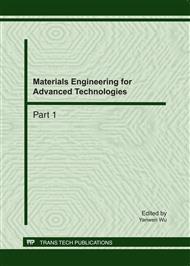[1]
Adar E, Huberman B. Free Riding on Gnutella[J]. First Monday, volume5, number 10, October (2000).
DOI: 10.5210/fm.v5i10.792
Google Scholar
[2]
Hardin G. TheTragedy of the Commons[J]. Science, 162: 1243-1481.
Google Scholar
[3]
WALDSPURGER C A, HOGG T, HUBERMAN B A, et al. Spawn: A distributed computational economy[J]. IEEE Transactions on Software Engineering, 1992, 15(1): 103-177.
DOI: 10.1109/32.121753
Google Scholar
[4]
G. Philippe, Kevin L B, Ilya M, et al. Incentives for Sharing in Peer-to-Peer Networks[A]. Proceedings of the ACM Conference on Electronic Commerce[C]. Tampa: DBLP, (2001).
Google Scholar
[5]
Wolski R, Plank J S, Bryan T, et al. G-commerce: Market formulations contro- lling resource allocation on thecomputational grid[A]. The lth lEEE International Parallel and Distributed Processing symposium[C]. Washington, DC, USA: IEEE Computer society, 2001: 10046.
DOI: 10.1109/ipdps.2001.924985
Google Scholar
[6]
Lijuan X, Yanmin Z, Lionel M, et al. GridIS: An Incentive-Based Grid Sch- eduling[A]. IPDPS[C], 2005(1): 65-74.
Google Scholar
[7]
Yang B, Molina H G. Micorpayments for Peer-to-Peer Systems[A]. Proceeding of the10th ACM Conference on computer and Communications Security[C]. Washington: ACM press, 2003. 3002310.
Google Scholar
[8]
Ioannidis J, Ioannidis S, Keromytis A D, et al . Fileteller: Paying and Getting Paid for File Storage[A]. In Proceedings of the Sixth Annual Conference on Financial Cryp tography[C]. Bermuda: Springer-Verlag, 2002. 282-299.
DOI: 10.1007/3-540-36504-4_20
Google Scholar
[9]
Ma R T B, Lee S C M, Lui J C S, et al. An Incentive Mechanism for P2P Networks[A]. Distributed Computing Systems, 2004[C]. Proceedings. 24th International Conference on, 24-26 March 2004 Pages: 516-523.
DOI: 10.1109/icdcs.2004.1281618
Google Scholar
[10]
Kamvar S D, Schlosser M T, Garcia-Molina H. Incentives for Combatting Freeriding on P2P Networks[A]. In Euro-Par 2003. June, (2003).
DOI: 10.1007/978-3-540-45209-6_171
Google Scholar
[11]
Kazaa Participation Level. http: /www. kazaa. com.
Google Scholar
[12]
Gau W L, Danied J B. Vague sets[J]. IEEE Transactions on Systems[C]. Man and Cybernetics, 1993, 23(2): 610-614.
DOI: 10.1109/21.229476
Google Scholar
[13]
Li Fan, Xu Zhangyan, Nao Yong. Vague Set[J]. Computer Science, 2000, 27(9): 12-14.
Google Scholar
[14]
M. Faloutsos, P. Faloutsos, C. Faloutsos. On Power-Law Relationship of the Internet Topology, [A]. Proc. of ACM SIGCOMM'99, page 251-262, Aug. (1999).
DOI: 10.1145/316194.316229
Google Scholar
[15]
Sun Liang, Huang De-cai. Grid Resource Discovery Model Based on Vague Set[J]. Journal of Zhejiang University of Technology, the paper is accepted.
Google Scholar


